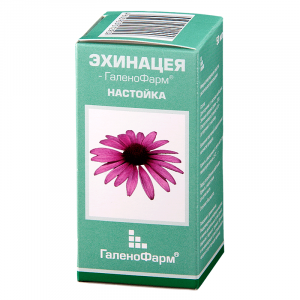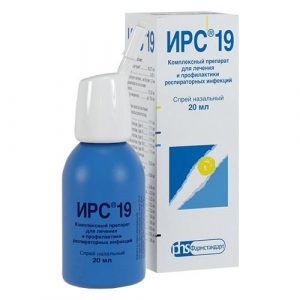Description
Latin name
ISOPRINOSINE
Release form
Tablets are white or almost white, oblong, biconvex, with a slight amine odor, with a risk on one side.
Packing
10 pcs – blisters (5) – packs of cardboard.
Indications
Treatment of influenza and other acute respiratory viral infections caused by Herpes simplex virus of the 1st, 2nd, 3rd and 4th types: genital and labial herpes, herpes keratitis, herpes zoster, chickenpox, infectious mononucleosis caused by Epstein-Barr virus
cytomegalovirus infection
severe measles
papillomavirus infection: papillomas of the larynx / vocal cords (fibrous type), papillomavirus infection of the genitals in men and women, warts
molluscum contagiosum.
Contraindications
Hypersensitivity to the components of the drug.
Gout, urolithiasis, chronic renal failure, arrhythmias, pregnancy, breastfeeding, children under 3 years old (body weight up to 15-20 kg).
Use during pregnancy and lactation
Use during pregnancy and during lactation (breastfeeding) is contraindicated.
Composition of
One tablet contains:
Active ingredient:
Inosine Pranobex (Isoprinosine) – 500 mg
Excipients:
mannitol,
wheat starch,
povidone magnesium,
povidone magnesium.
Dosage and administration of
Tablets are taken orally after a meal with a little water.
The recommended dose for adults and children from 3 years of age (body weight from 15-20 kg) is 50 mg / kg per day, divided into 3-4 doses. For adults – 6-8 tablets per day, for children – for? tablets at 5 kg / body weight per day. In severe forms of infectious diseases, the dose can be individually increased to 100 mg / kg body weight per day, divided into 4-6 doses.
The maximum daily dose for adults is 3-4 g / day, for children – 50 mg / kg / day.
Duration of treatment
Acute diseases: the duration of treatment in adults and children is usually from 5 to 14 days. Treatment should be continued until the disappearance of clinical symptoms and for another 2 days already in the absence of symptoms. If necessary, the duration of treatment can be increased individually under the supervision of a physician.
In chronic relapsing diseases in adults and children, treatment should be continued with several courses of 5-10 days with a break in admission of 8 days.
For maintenance therapy, the dose can be reduced to 500-1000 mg per day (1-2 tablets) for 30 days.
In cases of herpetic infection, adults and children are prescribed for 5-10 days until the symptoms disappear, in the asymptomatic period – 1 tablet Treatment should be continued until the disappearance of clinical symptoms and for another 2 days already in the absence of symptoms. If necessary, the duration of treatment can be increased individually under the supervision of a physician.
In chronic relapsing diseases in adults and children, treatment should be continued with several courses of 5-10 days with a break in admission of 8 days.
For maintenance therapy, the dose can be reduced to 500-1000 mg per day (1-2 tablets) for 30 days.
In cases of herpetic infection, adults and children are prescribed for 5-10 days until the symptoms disappear, in the asymptomatic period – 1 tablet Treatment should be continued until the disappearance of clinical symptoms and for another 2 days already in the absence of symptoms. If necessary, the duration of treatment can be increased individually under the supervision of a physician.
In chronic relapsing diseases in adults and children, treatment should be continued with several courses of 5-10 days with a break in admission of 8 days.
For maintenance therapy, the dose can be reduced to 500-1000 mg per day (1-2 tablets) for 30 days.
In cases of herpetic infection, adults and children are prescribed for 5-10 days until the symptoms disappear, in the asymptomatic period – 1 tablet
In chronic relapsing diseases in adults and children, treatment should be continued with several courses of 5-10 days with a break in admission of 8 days.
For maintenance therapy, the dose can be reduced to 500-1000 mg per day (1-2 tablets) for 30 days.
In cases of herpetic infection, adults and children are prescribed for 5-10 days until the symptoms disappear, in the asymptomatic period – 1 tablet
In chronic relapsing diseases in adults and children, treatment should be continued with several courses of 5-10 days with a break in admission of 8 days.
For maintenance therapy, the dose can be reduced to 500-1000 mg per day (1-2 tablets) for 30 days.
In cases of herpetic infection, adults and children are prescribed for 5-10 days until the symptoms disappear, in the asymptomatic period – 1 tablet2 times a day for 30 days to reduce the number of relapses.
In case of human papillomavirus infection, the drug is prescribed 2 tablets 3 times a day, for children -? tablets of 5 kg / body weight per day in 3-4 doses for 14-28 days in the form of monotherapy. With recurrent genital warts, for adults, the drug is prescribed 2 tablets 3 times, for children -? tablets at 5 kg / body weight per day in 3-4 doses per day, either as monotherapy or in combination with surgical treatment for 14-28 days, then with a triple repetition of the indicated course at intervals of 1 month.
In case of cervical dysplasia associated with human papillomavirus, 2 tablets are prescribed 3 times a day for 10 days, then 2-3 similar courses are carried out with an interval of 10-14 days.
Side effects
From the nervous system: often – headache, dizziness, fatigue, poor health infrequently – nervousness, drowsiness, insomnia.
From the gastrointestinal tract: often – decreased appetite, nausea, vomiting, epigastric pain infrequently – diarrhea, constipation.
From the hepatobiliary system: often – increased activity of liver enzymes, alkaline phosphatase.
From the skin and subcutaneous fat: often – itching, rash.
From the kidneys and urinary tract: infrequently – polyuria.
Allergic reactions: infrequently – maculopapular rash, urticaria, angioedema.
From the musculoskeletal system: often – joint pain, exacerbation of gout.
Other: often – increased blood urea nitrogen concentration.
Drug Interaction
Immunosuppressants attenuate the immunostimulatory effect of pranobex inosine.
When co-administered with xanthine oxidase inhibitors (allopurinol) or loop diuretics (furosemide, torasemide, ethacrynic acid), uric acid concentration in the serum may be increased.
Co-administration with zidovudine increases the concentration of zidovudine in blood plasma and lengthens it with T1 / 2. This combination may require a dose adjustment of zidovudine.
When combined, enhances the action of interferon-alpha, antiviral agents acyclovir and zidovudine.
overdose
Isoprinosine overdose has not been reported.
Storage conditions
List B.
The drug should be stored out of the reach of children, in a dry, dark place at a temperature not exceeding 25 ° C.
Expiration
5 years.
Deystvuyuschee substances
inosine pranobex
pharmacy terms for prescription
dosage form
Dosage form
tablets




